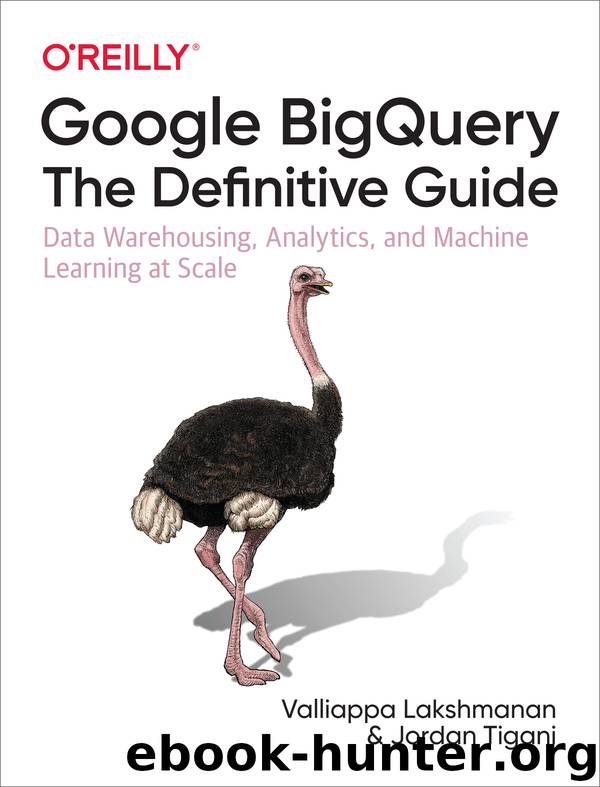Google BigQuery by Valliappa Lakshmanan

Author:Valliappa Lakshmanan
Language: eng
Format: epub
Publisher: O'Reilly Media
Published: 2019-10-29T16:00:00+00:00
JOIN versus denormalization
What if we were to store the distance traveled in each trip in a denormalized table?
CREATE OR REPLACE TABLE ch07eu.cycle_hire AS SELECT start_station_name , end_station_name , ST_DISTANCE(ST_GeogPoint(s1.longitude, s1.latitude), ST_GeogPoint(s2.longitude, s2.latitude)) AS distance , duration FROM `bigquery-public-data`.london_bicycles.cycle_hire AS h JOIN `bigquery-public-data`.london_bicycles.cycle_stations AS s1 ON h.start_station_id = s1.id JOIN `bigquery-public-data`.london_bicycles.cycle_stations AS s2 ON h.end_station_id = s2.id
Querying this table returns results in 8.7 seconds and processes 1.6 GB—in other words, it’s 60% slower and about three times more expensivethan the previous query. In this instance, therefore, joining with a smaller table turns out to be more efficient than querying a larger, denormalized table. However, this is the sort of thing that you need to measure for your particular use case. You will see later how you can efficiently store data at differing levels of granularity in a single denormalized table with nested and repeated fields.
Download
This site does not store any files on its server. We only index and link to content provided by other sites. Please contact the content providers to delete copyright contents if any and email us, we'll remove relevant links or contents immediately.
Secrets of the JavaScript Ninja by John Resig Bear Bibeault(6106)
Implementing Enterprise Observability for Success by Manisha Agrawal and Karun Krishnannair(4687)
Supercharging Productivity with Trello by Brittany Joiner(3946)
Mastering Tableau 2023 - Fourth Edition by Marleen Meier(3702)
Linux Device Driver Development Cookbook by Rodolfo Giometti(3678)
Inkscape by Example by István Szép(3572)
Visualize Complex Processes with Microsoft Visio by David J Parker & Šenaj Lelić(3293)
Design Made Easy with Inkscape by Christopher Rogers(3162)
Build Stunning Real-time VFX with Unreal Engine 5 by Hrishikesh Andurlekar(2937)
TCP IP by Todd Lammle(2738)
Customizing Microsoft Teams by Gopi Kondameda(2706)
Work Smarter with Microsoft OneNote by Connie Clark(2681)
Drawing Shortcuts: Developing Quick Drawing Skills Using Today's Technology by Leggitt Jim(2629)
Pandas Cookbook by Theodore Petrou(2602)
Applied Predictive Modeling by Max Kuhn & Kjell Johnson(2598)
The Tableau Workshop by Sumit Gupta Sylvester Pinto Shweta Sankhe-Savale JC Gillet and Kenneth Michael Cherven(2484)
Extending Microsoft Power Apps with Power Apps Component Framework by Danish Naglekar(2335)
40 Algorithms Every Programmer Should Know by Imran Ahmad(2274)
Learn Qt 5: Build modern, responsive cross-platform desktop applications with Qt, C++, and QML by Nicholas Sherriff(2240)
